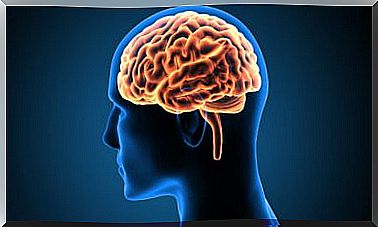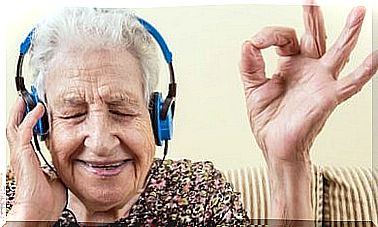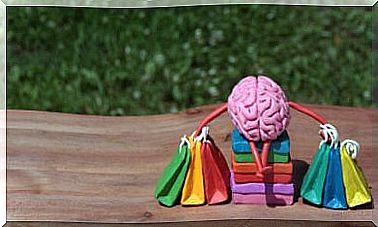Indirect Trauma: The Effect Of Exposure To Other People’s Pain

Indirect trauma is a process that appears when we continually witness the suffering of other people. Although this psychological phenomenon is very common in health professionals, it should be noted that it is not exclusive to the medical and psychological field. Moreover, any of us can carry the pain of a wound that is not ours and that we still feel with the same intensity.
This appears frequently in the family environment. Some have grown up with the stories of that distant grandfather, uncle or cousin who had a traumatic experience in their past. A death, a disappearance, the impact of a war or any violent act is a shadow that often spans several generations.
The pain of others can settle in the mind in many ways. We cannot ignore that we are emotional beings and that the impregnation of the suffering of others is something very recurrent. However, at times, that contagion can undermine our psychological architecture, awakening nightmares, inducing unwanted images and discomforts that can limit one’s life. We analyze it.

Indirect trauma: what it is and how it appears
Trauma can be experiential and direct or vicarious and indirect. Thus, while the first arises as a consequence of a highly painful experience on one’s own skin, the second occurs as a result of exposure to the discomfort and suffering of others.
This fact is not without a high psychological and even social interest for many reasons. In relation to this, we have a study carried out at Keimyung University (Korea) that is as interesting as it is revealing.
In 2014, the so-called Sewol ferry disaster occurred in South Korea. 476 people were traveling in it, but shortly before reaching Byungpoong Island, it began to sink for no apparent reason. 304 people died. It took almost a month to retrieve the bodies, but dozens of them have yet to be found since.
It is known that this event created a great impact on the population. Its broadcast on television was constant, so that thousands of people began to experience peri- and post-traumatic crises. The memory of this event is still something highly painful for a part of South Koreans.
What are the symptoms?
Indirect trauma can manifest itself in many ways and each person, in turn, can experience it in a very particular way. However, there are some common elements that help us to identify this psychological reality:
- Physical symptoms: digestive disorders, stomach pain, nervousness, trouble sleeping …
- Emotional symptoms: sadness, anguish, dejection, feeling more irritated, greater tendency to anger, etc.
- Cognitive manifestations: worry, not being able to stop thinking about the suffering of the other person, problems concentrating or making decisions, the appearance of nightmares … It is common, for example, to suffer what is known as re-experiencing, that is, it tends to remember the traumatic experience of the other through rumination or flashbacks.
- Behavioral changes : having less desire to socialize, loss of interest in leisure, changes in diet, problems being productive at work …
Why do we suffer we can suffer an indirect trauma?
More than one may ask you. Why do we suffer a trauma when that experience is not ours? Why, for example, does the suffering of that friend who lost his son in a traffic accident persist in his mind? What makes a nurse end up showing, for example, a vicarious trauma?
- The answer is simple: we are empaths, we are beings made of emotions. It is almost impossible to stay on the sidelines when empathy makes us feel the other’s pain as our own.
- Research works such as those carried out by Hallinan et al. from Boston University (United States) point out that there are many policemen, for example, who carry indirect trauma. Thus, at times, empathy itself is compounded by the feeling of powerlessness, of not being able to do anything to prevent the suffering of some people.

How to deal with this type of indirect or vicarious trauma?
Many health professionals have, in many cases, resources and mechanisms to address the trauma caused by continued exposure to the suffering of others. Compassion fatigue, for example, is a mental state associated with this type of psychological reality and for this, it is common to share experiences with colleagues and perform group dynamics.
Now, in what way can we handle indirect trauma when it appears, for example, as a result of exposure to the condition of a family member or friend? These would be some keys:
- Viktor Frankl used to say that whoever gives birth must learn to treat burns. It is necessary to learn to avoid the impact of emotional contagion. Only when we are able to establish that protective barrier, we are more adept at being able to help the other.
- Self-awareness, reflecting on one’s own reality, separating it from the suffering of others is another essential key. To do this, it is good to develop what we know as ecpathy, a mental resource that allows us to get involved with others, but from a healthier level, without suffering emotional infections.
- Rest, therapeutic writing, and self-care are good strategies for these cases.
- On the other hand, it is always advisable to share our experiences, thoughts and emotions with other people. Saying out loud what we are feeling is always cathartic and liberating.
To conclude, it is important to consider that at times, indirect trauma can excessively erode our psychological balance. If we feel overwhelmed, if we have problems sleeping and we perceive that our mood has changed, do not hesitate to ask for expert help.









